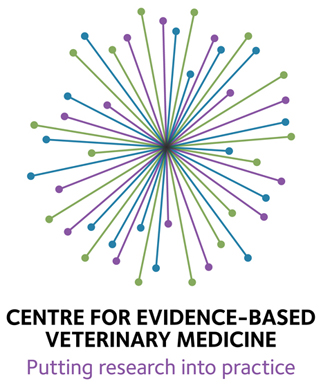The beauty of pseudoscience as a marketing tool is that it is, for those not trained in the particular branch of real science being mimicked, almost indistinguishable from the real thing. Of course, many of the warning signs of quackery are often present, especially claims of revolutions or “paradigm shifts” that overturn well-established science, claims of a single cause or cure for many unrelated diseases, the presence of the Quack Miranda Warning, and naturally lots of testimonials with a conspicuous absence of real evidence published in legitimate scientific journals. But it is easy to see why the use (misuse, really) of scientific terminology, often by people with legitimate (though irrelevant) scientific degrees, can be quite convincing even if the idea or product being marketed is completely bogus.
Our latest example has all this and much, much more! Meet the revolution in veterinary medicine that is Double Helix Water! What is Double Helix Water? Here’s what the “inventors” and promoters of this product say:
Double Helix Water™ is solely ultra-pure H2O but we believe it is H2O in a hitherto undiscovered fundamental “phase”; not liquid, ice or vapor “phase” but a molecular solid phase even at room temperatures.…this “phase” may be the key to many of the body’s inherent healing properties thus explaining many of the mysteries of alternative health practices. They demonstrate through rigorous scientific experimentation that water can form a solid particle at room temperature. The discovery of this particle then, begins to unravel the mystery behind the differences between allopathic and homeopathic medicine as we know it.
Ahhh, so there is a connection with homeopathy, eh? Well, sort of. the promoters certainly claim their “discovery” explains the powerful effects of homeopathy (which they seem to take as a given, despite the strong, consistent evidence that homeopathy is no better than a placebo). However, there is no talk of the Law of Similars, Dilution and Sucussion, which are core theoretical concepts behind orthodox homeopathy, so one wonders exactly what the connection is beyond the absence of anything but water in this product and in homeopathic remedies. Despite this, the forward to the promoters’ book on their product states clearly that the “discovery” takes,
the concept of homeopathy into the twenty-first century…Their demonstration of microscopic clusters in water is groundbreaking and revolutionary! Their purification of water, with the atmospheric purity described, places homeopathy on a scientifically valid foundation that is equal at least to the discovery of atomic energy.
What Are the Claims?
On another site devoted to this product, the promoters first weasel out of any liability or fraud allegations by stating,
It is not a drug or a curative agent (medicine) in any respect. [We] are not medical doctors and we want all to know that we make no representations that this water treats or cures anything, period….let’s all be careful about how we introduce this discovery to the world: Do not make claims, please! This water does not “cure” cancer, does not “cure” diabetes—it does not cure anything. It is not a drug; it is not a medicine. It is simply water…
Disclaimer out of the way, they then merrily go on to say
It is our belief that this phase of water is a central agent in the arsenal of the body’s immune response….we theorize that these particles are the molecular basis for what Chinese Medicine has suggested for over two thousand years: that an electrical matrix surrounds the body and this electrical matrix is the senior dominating factor in all health issues….Therefore it is very feasible that we have found a material basis for the Chinese meridians.
Wait, I thought their “discovery” proved the scientific basis of homeopathy. So, it also proves the scientific basis behind Traditional Chinese Medicine? Wow! Anyway, on to more medical claims:
….have numerous MDs and scores of other healthcare professionals recommended this new phase of water to their clients, patients and family members for a healthy lifestyle? Absolutely. If one is a rational, sane individual and witnesses large numbers of people with many varied health problems experiencing remarkable changes in their wellness, something occurs deep inside oneself. It becomes more a crusade than a research line. And the people whose lives have been saved or changed greatly for the better want others to know what they think of this water—so the word spreads.
And not to leave out the important (and potentially lucrative?) veterinary sector, the promoters of Double Helix Water provide some additional endorsement on this site from a paragon of the holistic hodgepodge school of veterinary medicine, Dr. Deva Khalsa, who says:
I have found Double Helix to be a cutting edge product that works deeply to heal my canine and feline patients. I’ve found it helpful in cases of arthritis, autoimmune disease, cancer and diabetes along with other medical problems.
The folks marketing Double Helix Water, clearly have a philosophical agenda that goes beyond their claims of mere scientific interest in the nature of water, or even the possibly genuine belief that anecdotes and testimonials have really shown it to be useful. This is clear from the preface to their book, which contains a remarkable number of quack warning signs efficiently packaged in a small space:
The Secret of Life has been the foundation of philosophy and medicine throughout history. The Chinese called it chi; the Japanese, qi; the Indians, prana; and Wilhelm Reich, orgone. Much of medicine before 1940 was rather pragmatic empirical practice with many errors. Since 1940 the bulk of modern medicine has been a takeover by the PharmacoMafia—my title for the pharmaceutical industry. Today Modern Medicine is at least the third leading cause of death in the United States (JAMA, July 2000). Drugs that have little justification and serious risks, called side effects, are added almost daily to the stream of offerings. Numerous brave souls question the current system, and yet it is THE SYSTEM rejecting and attacking viciously virtually every alternative.
Nothing as inspiring as an open-minded individual disinterestedly pursuing the greater good of all, eh? Well, perhaps not entirely open-minded philosophically, as this passage illustrates. What about disinterested? Well, let’s not forget that even though it’s “just water,” they aren’t exactly giving it away. Here’s the “bottom line” from one of their two official vendors, Dr. Khalsa:
One bottle of Double Helix Water™ (a three months supply) at an average usage price of $1.22 a day – $109.95
One bottle of Double Helix Water™ (a two months supply) at an average usage price of $1.33 a day – $79.99
Special Subscription Pricing Offer – Receive a three month supply every three months at an average usage price of $1.12 a day – $99.99
Who’s Behind It?
Interestingly, two of the promoters, David Gann and Dr. Shiu-Yin Lo appear to have a long history of selling dubious forms of magic water. Dr. Lo was Director of Research and Development for American Technologies Group (ATG) in the 1990s. He claimed to have discovered another form of structured water with elements called “IE crystals” in it, which was marketed in the form of a detergent-free cleaning product called a “laundry ball” and also an automobile engine performance enhancer called The Force. According to one source, these products were investigated by the Oregon Department of Justice and determined to be fraudulent, and the company paid a fine and eventually closed down. Affidavits from a an independent analytical laboratory and a professor of chemistry at the University of Oregon were submitted refuting the company’s claims about IE crystals, and the DOJ concluded that these claims were not supported and not consistent with appropriate scientific practices. David Gann was the Director of Marketing for ATG.
Dr. Norm Shealy, who wrote the preface to the marketing book about Double Helix Water, is a committed proponent of Hodgepodge Holism on the human side, including spiritual and prayer healing, hormones and all manner of supplements, energy medicine, and a wide variety of unproven and quack therapies. All three of these individuals obviously have lifelong personal, and financial, commitments to bogus medical therapies.
And there is the veterinary face of Double Helix Water, Dr. Deva Khalsa. From her web site, she subscribes to any and all forms of alternative therapy grouped, for no obvious reason, under the label “holistic.” Acupuncture, homeopathy, herbal therapies, chiropractic, applied kinesiology, prolotherapy, energy medicine, hair analysis, all sorts of supplements, and of course Double Helix Water. Dr. Khalsa will even consult and prescribe these remedies by phone, which is certainly a more convenient way of assessing your pet’s needs than a bothersome in-person visit or physical exam.
What About the Science?
So, what about this “scientific breakthrough”? Any chance it’s real? Well, not being an expert in physics or chemistry, despite some training in those fields, I can’t evaluate the underlying theory very extensively. Of course, neither can the doctors who believe in the remedy, despite their glowing testimonials and deep faith. Those of us who practice science-based medicine are sometimes at a disadvantage since we cannot as blithely dismiss the claims we haven’t investigated or understood thoroughly as easily as those who practice faith-based medicine can affirm them without investigating or understanding them. However, there are some with the appropriate expertise who do dismiss the claims about “structured water” in general, including a product previously “invented” and sold by one of the promoters of Double Helix water. Apart from the affidavits and analyses submitted in association with the fraud investigation of ATG, there is an entire web site devoted to structured water quackery, provided by a former professor of chemistry, Stephen Lower. Apparently, there is an entire industry built around claims that manipulating the atomic or molecular properties of water can solve all your health problems. Dr. Lower mentions Dr. Lo’s claims about IE crystals and points out that the only scientific publication concerning these claims was in a journal, Physics Letters B, that does not require reporting the details of one’s methodology and has minimal peer review, so it is difficult to assess the quality or reliability of the data presented. The findings have been challenged on practical and theoretical bases both by Dr. Paul Engelking, the author of the affidavit in the ATG case (here) and by Steven Bittenson, a physicist who is actually a proponent of homeopathy (here). Another paper of Dr. Lo’s, on so-called “stable water clusters” and presented on the front page of the Double Helix Water website (here) is from the companion journal Physics Letters A. No other journal appears willing to publish Dr. Lo’s claims about water, which should be cause for some skepticism about them.
Dr. Lower provides lengthy discussions on his site of the science, and pseudoscience, behind “structured water,” and while my expertise only permits me to say with confidence that the medical claims for Double Helix Water are implausible and without any real evidence to support them, Dr. Lower cogently argues that the same is true of the underlying physics and chemistry claims made by the inventors of this wonder product.
So in essence we have a group of individuals dedicated not only to theories and practices which are improbable and not supported by solid evidence or accepted by mainstream science, but also with a long history of trying to make a living selling products based on these theories. The perfect storm of cognitive dissonance, philosophical bias, and financial self-interest to prevent any rational consideration on the part of the promoters that they might be mistaken. The result is yet another unproven and most likely thoroughly useless product sold to people who only want the best for their sick pets, and most often to those whose animal companions have serious medical problems for which highly effective real therapies don’t exist. Empty promises and false hope, for only $79.99-199.99 per bottle (plus shipping and handling).









